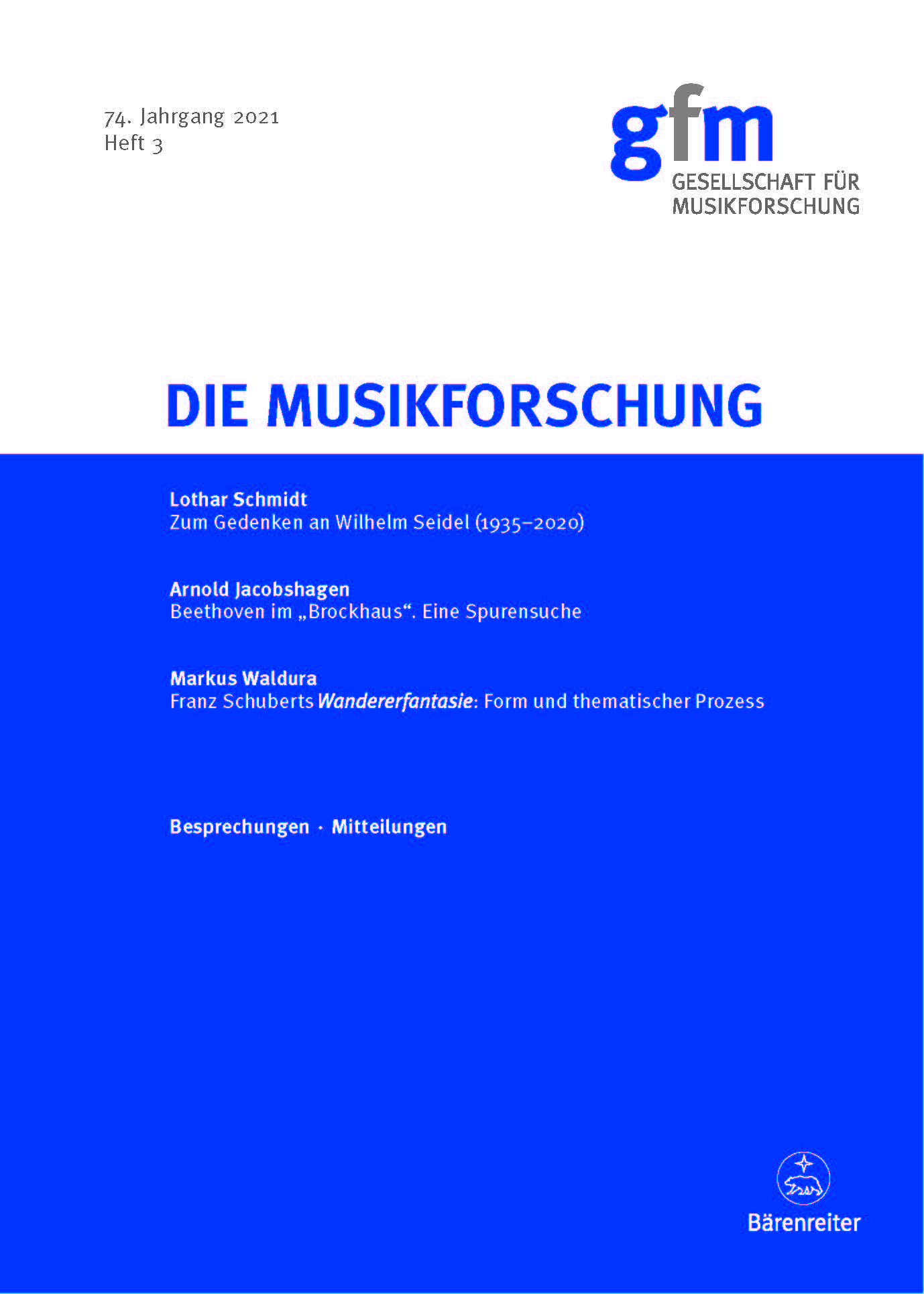Franz Schuberts "Wandererfantasie"
Form und thematischer Prozess
DOI:
https://doi.org/10.52412/mf.2021.H3.3005Abstract
Franz Schubert’s D760 is entitled “fantasy”, although the four sections of the work recognisably reference the formal models of a four-movement sonata. Since those models appear in their traditional order, the “fantasy” elements have to manifest themselves differently, transgressing the norms of sonata in two ways: Schubert transforms and deconstructs the individual forms of the four-movement model, while suspending the autonomy of each movement. Both strategies are interrelated: by blurring the form of each movement, Schubert opens them up to the following sections. This is rendered plausible because the movements, which connect seamlessly, are derived from the same thematic material.
The deconstruction of the formal models manifests itself in the elision of formal units, the interpolation of non-formal sections, and the startling curtailing of developmental procedures within the formal units. These formal licences generate ambiguous structures that do not lend themselves to definite formal interpretations. Thus formal ambiguity is a constituting element of the “fantastic” in D760.
The thematic unity of the work is a result of the continuous transformation of a motif first presented in the main theme of the first movement; a process, in which new variants emerge from the synthesis of previous variations. Furthermore, the Presto, which stands in for the scherzo movement of the Fantasy, reverse engineers the sonata form of the first movement (which had been abandoned before the recapitulation) while completing and normalising the form of the first movement by aligning it with the scherzo form. Thus the Presto assumes the formal function of the missing recapitulation, whose “wrong” key of A flat major is “rectified” through the C-major finale.






